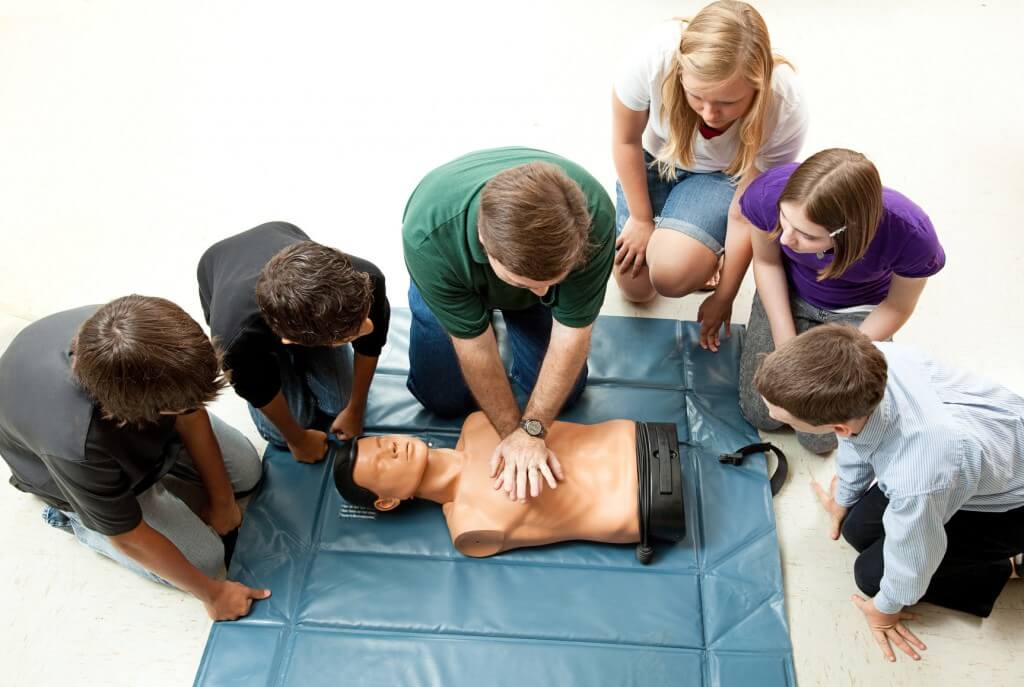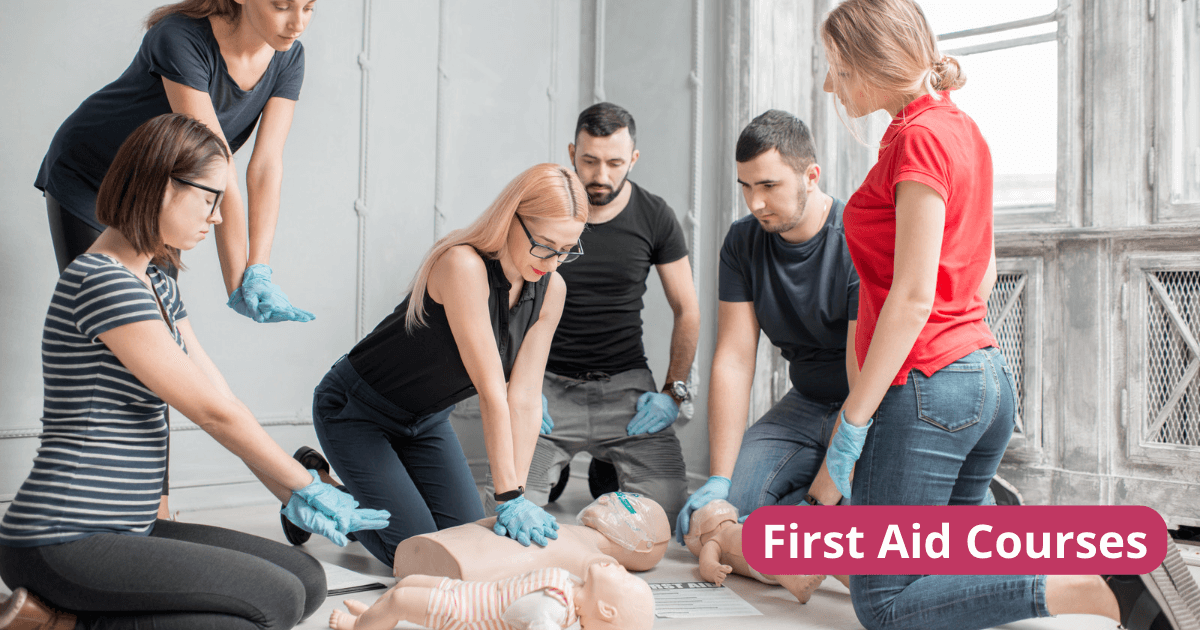Introduction
In today's globe, emergency situations can strike at any moment, and being prepared is important. One of the key skills that can conserve lives is cardiopulmonary resuscitation (MOUTH-TO-MOUTH RESUSCITATION). Young adults represent an important population that can be trained to react effectively in emergencies. By outfitting them with mouth-to-mouth resuscitation training, we not only equip them with life-saving skills however additionally promote a society of preparedness and obligation. This write-up discovers the relevance of mouth-to-mouth resuscitation training for teenagers, what to expect in emergency treatment programs, and just how these skills contribute to their personal growth and community safety.

Understanding CPR Educating for Teens: Preparing the Next Generation for Emergencies
What is CPR?
Cardiopulmonary resuscitation (MOUTH-TO-MOUTH RESUSCITATION) is a lifesaving strategy made use of throughout emergency situations when a person's heartbeat or breathing has actually stopped. It contains breast compressions and rescue breaths that assist keep blood flow to important organs up until specialist clinical assistance gets here. Recognizing the principles of mouth-to-mouth resuscitation is crucial for teenagers that might locate themselves in emergency situations.
Why Do Teens Required CPR Training?
Teens are commonly at social gatherings, sports events, or even home parties where emergencies could happen. By discovering mouth-to-mouth resuscitation, they come to be proactive members of their neighborhood that can act decisively throughout dilemmas. The capability to execute mouth-to-mouth resuscitation confidently can turn a possibly unfortunate situation right into one where lives are saved.
Benefits of First Aid Courses for Teens
First help courses do greater than simply show participants how to supply instant treatment; they infuse confidence and reinforce analytic abilities. For teenagers, this experience can construct character and motivate management top qualities.
- Empowerment: Knowledge of first aid and CPR empowers young people. Confidence Building: Efficiently finishing a course supplies teenagers with a sense of achievement. Community Service: Trained teens can offer in numerous setups such as institutions or sports teams.
The Structure of CPR Courses for Teens
Course Period and Format
Most first aid training courses are made to fit within a couple of hours to a number of days, relying on the deepness of training provided. Normally, a basic emergency treatment course will certainly cover:
- Theory: The principles behind emergency treatment techniques. Practical Abilities: Hands-on experiment mannequins or through simulations.
Key Components Covered in Emergency Treatment Courses
Understanding Emergency situation Situations- Recognizing when to call for help Assessing the scene for safety
- Performing high-quality chest compressions Providing rescue breaths correctly
- Learning exactly how to run an AED Importance of very early defibrillation
- Techniques for grownups, children, and infants Recognizing signs of air passage obstruction
- Cuts and scrapes Sprains and fractures
The Importance of Qualification in First Aid Training
Obtaining Your First Aid Certificate
Completing an emergency treatment course normally finishes in obtaining a qualification that confirms your abilities. This certification serves multiple functions:

- It demonstrates competence in emergency situation response. Many organizations require qualification for participation in particular events.
Keeping Qualifications Current
Just like any type of life skill, it is necessary to keep your understanding up-to-date. Many companies suggest restoring accreditations every two years.
How Young adults Can Obtain Included with Emergency Treatment Training
Finding Regional First Aid Courses
Teenagers thinking about getting their emergency treatment certificate ought to check into neighborhood community centers, institutions, or health companies that supply licensed courses.
Helpful Resources:
- American Red Cross St John Ambulance Local medical facilities or health and wellness departments
Online vs In-Person Training Options
With innovations in innovation, on-line components have actually come to be popular yet might do not have hands-on technique essential for absolutely grasping strategies. A mixed technique-- combining on-line concept with sensible sessions-- could be most beneficial.
Creating Recognition Among Peers regarding Mouth-to-mouth Resuscitation Educating for Teenagers: Preparing the Future Generation for Emergencies
Peer Education Initiatives
Encouraging teens to share what they've discovered with their friends can enhance the influence of training programs:
- Forming study groups focused on emergency situation preparedness. Hosting workshops at institutions or neighborhood centers.
Using Social media site as a Platform
Teens today are heavily engaged on social media platforms; using these networks can aid spread recognition about the relevance of first aid training amongst peers.
Real-Life Stories That Emphasize the Relevance of CPR Educating for Teens
Case Research 1: Conserving a Life at Institution Sports Event
A young adult learnt mouth-to-mouth resuscitation had the ability to conserve their friend's life throughout a football match when he broke down on the area due to cardiac arrest. Their fast thinking permitted them to administer appropriate chest compressions up until emergency solutions arrived.
Case Study 2: Family Emergency at Home
Another instance included siblings that had taken an emergency treatment course together. When their younger bro unintentionally choked on food throughout supper, they immediately recognized what actions to take due to the fact that they remembered their training-- leading them efficiently via the emergency.
Frequently Asked Questions (Frequently Asked Questions) Concerning Teenager Mouth-to-mouth Resuscitation Training
1. What age must teens begin taking mouth-to-mouth resuscitation courses?

2. How long does it require to complete a first aid course?
Courses commonly vary from 4 hours up to 16 hours depending on web content depth-- the standard being around 8 hours.
3. Exist any type of requirements before enrolling?
No official requirements exist; nonetheless, it's helpful if participants have an understanding of fundamental medical terms.
4. Will certainly I obtain accreditation after finishing my course?
Yes! Upon effective conclusion and passing any type of essential analyses you'll obtain a main emergency treatment certification valid for two years.
5. Can I take these courses online?
Numerous institutions use hybrid styles integrating on-line concept with needed functional sessions held in person-- this is recommended by sector standards.
6. Is it required to renew my accreditation periodically?
Yes! Regular recertification ensures your abilities remain skilled and current according to present guidelines.
Conclusion
In conclusion, equipping teens with knowledge regarding cardiopulmonary resuscitation (CPR) via specialized training programs is important not only for their development however also boosts area security generally. With effective training resources available-- from regional programs providing thorough instruction on both basic emergency treatment methods along with innovative life Brisbane First Aid Course Near Me support methods-- it's less complicated than in the past for young people eager about making an impactful distinction throughout emergencies!
As we move forward into an unforeseeable globe loaded with difficulties requiring swift activity-- let us invest our initiatives in the direction of educating this future generation so they're prepared not just academically however also almost furnished when encountered against real-life situations requiring urgent responses like those needing prompt interventions such as doing reliable cardiopulmonary resuscitation (MOUTH-TO-MOUTH RESUSCITATION).